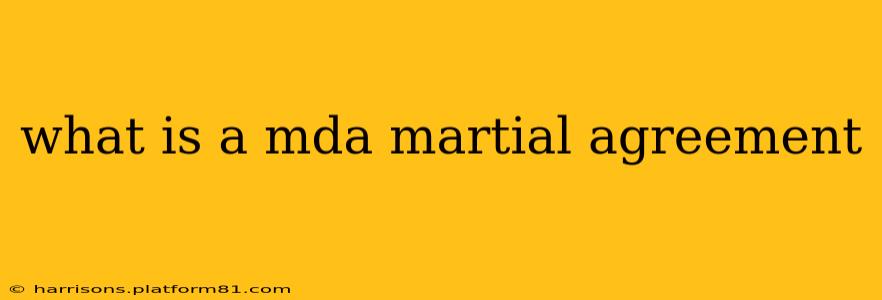A Mutual Defense Agreement (MDA), in the context of martial arts or combat sports, isn't a formally recognized or standardized legal document like a contract. Instead, it refers to an informal agreement between individuals or groups involved in training or sparring, outlining the terms and conditions under which they engage in physical contact. The lack of formal structure means specifics vary widely, but the core purpose remains the same: to establish mutual understanding and respect to ensure the safety and well-being of all participants.
Think of it less as a legally binding contract and more as a gentleman's agreement or a set of shared understandings. While there's no official template, a common understanding of what constitutes an MDA in this context usually includes elements like:
Key Elements of an Implied or Explicit MDA
- Respectful conduct: This is paramount. Participants agree to treat each other with respect, both inside and outside of training. This includes controlling emotions and avoiding unnecessary aggression.
- Safety precautions: This involves adhering to established safety rules and protocols of the training environment (e.g., using appropriate protective gear, controlling the intensity and force of techniques, listening to instructors).
- Agreed-upon rules of engagement: This section specifies the types of techniques allowed (or disallowed), the level of intensity, and any restrictions on specific areas of the body. For example, strikes to the groin might be prohibited in a particular setting.
- Emergency procedures: Participants need to agree on what actions should be taken in case of injury, including who will provide first aid and how medical attention will be sought.
- Mutual consent: All participants must willingly agree to the terms of the MDA. If anyone feels uncomfortable or unsafe, the agreement should be adjusted or training should be stopped.
What if there's no written agreement?
Often, an MDA is implicit within the training environment or school's code of conduct. The established culture, instructor's guidance, and established norms effectively act as an unwritten agreement. However, in more formal settings or when involving significant risk, it's prudent to have a written agreement, even if it's just a brief summary of expectations.
H2: What are the legal implications of an MDA in martial arts?
The legal implications are minimal for an informal MDA. It's not a contract in the strict legal sense. However, if someone violates the understood agreement, it can be relevant in case of a lawsuit if negligence or recklessness can be proven. This is why the emphasis on safety, respect, and mutual consent is so critical.
H2: What if someone breaks the MDA agreement?
If a participant violates the implied or explicit MDA, the consequences could vary. It might range from a verbal warning from the instructor to suspension from training or expulsion from the school. In extreme cases, particularly involving serious injury due to negligence, legal action could be taken, though proving liability would depend heavily on the specifics of the situation and the evidence available.
H2: Does a signed waiver replace an MDA?
No. A waiver typically addresses liability in case of injury, whereas the MDA focuses on the rules and conditions of engagement before injury occurs. While both are important in a martial arts setting, they serve distinct purposes and ideally should exist in conjunction with each other.
In summary, a MDA in martial arts isn't a formal legal document, but a crucial set of understandings that ensures a safe and respectful training environment. While often implicit, clearly defined expectations significantly reduce the risks and contribute to a positive learning experience for everyone.
